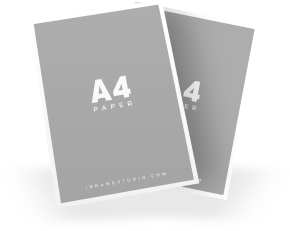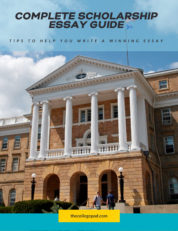TThe highly publicized act of "debt forgiveness" gifted to 400 Morehouse College graduates by Texas billionaire Robert Smith in 2019 sparked celebration. During his commencement address, Smith announced his intention to pay off the student loans of each graduate, totaling $40 million. This brought excitement to the students and even more so to their parents. At the time, the average outstanding balance for Morehouse College graduates with a bachelor's degree was $26,000, according to the US Department of Education's College Scorecard. Today, in 2023, this event remains a significant moment in student loan news.
According to U.S. News and World Report, the amount of debt that students have to take on went up by 25 percent from 2009 to 2021. Students are borrowing more money because college tuition costs have risen much more quickly than people's incomes have
Student debt can become a crisis if students fail to develop a plan and stick to it. Therefore, parents and students should discuss how they will fund college before students apply to college. As a first step, families should figure out their Net Price to determine if they will need to take out loans to cover part or all of their cost of attendance.
By all means, consider strategies to cut college costs. Attending a collegiate high school or taking dual credit courses, for instance, could help students earn college credits while still in high school and reduce their overall college costs. Other cost saving measures include applying for as many private scholarships as you can. All those $500 and $2,500 scholarships add up. Some colleges also offer automatic merit scholarships based on your test scores and GPA.
>>RELATED: How to Pay for College: 7 Strategies to Make College Affordable
If you have to borrow to fund your education, here are five (5) things you should know:
1. What are the different types of student loans?
There are two main sources of student loans: the federal government and private institutions. Federal student loans are generally better than private loans because they have lower interest rates and more flexible repayment terms. To access these loans, your first step is to complete and submit the FAFSA.
The federal loans available to fund your undergraduate education are:
- Subsidized loans are available to undergraduate students with demonstrated financial need (as determined by information submitted in FAFSA)
- Unsubsidized loans are available to all undergraduate, graduate and professional students with or without demonstrated financial need.
- Direct PLUS Loans – Parent PLUS Loans are available to parents of dependent students. If parents pass a credit check, they can borrow for their student up to the full cost of attendance minus any financial aid the student receives.
2. How much federal loans can you borrow?
Dependent undergraduates can borrow $5,500 as freshmen, $6,500 as sophomores, and up to $7,500 as juniors and seniors. Independent students can borrow $9,500 as freshmen, $10,500 as sophomores, and up to $12,500 as juniors and seniors.
If your parents cannot qualify for a PLUS Loan, you, as a dependent student, may receive more Unsubsidized Loans. Undergraduate student loans typically have a 10-year term..
3. Who is eligible for student loans?
Students who are attending college at least half-time are eligible for these loans. The subsidized loan is based on financial need; however, the unsubsidized loans are available for any student attending a college that participates in the Direct Loan program.
Parents of dependent students can apply for a ParentPLUS loans to fund their student's education. They must show they are creditworthy to qualify or find a co-signer with a great credit score.
Students or parents who have previously defaulted on loans may not be eligible for federal (or private) student loans.
4. Loans might be part of your financial aid award
Additionally, student loans can supplement a student's financial aid package. While many students aim for full-ride scholarships, most will only receive scholarships and grants that partially cover their educational expenses. Generally, students in the top 10-25% of applicants are more likely to qualify for additional merit-based aid compared to other applicants.
Colleges offer merit aid to attract top students, except for highly selective and Ivy League schools that provide generous need-based financial aid instead. Need-based financial aid is available to both low-income and high-income families. For instance, Yale University meets 100% of student financial need without requiring loans, even for families with incomes over $200,000.
>>RELATED: 5 Tips to Appeal A Financial Aid Award
5. Are federal student loans better than private student loans?
Third, federal student loans are available to students attending college with and without financial need. These loans generally have lower interest rates and more favorable repayment terms than private ones. Moreover, interest rates for private student loans will depend on the borrower's (parent or student) creditworthiness (credit score).
Some other advantages a federal student loan offers:
- Interest-free while in college: The federal government will pay the interest for recipients of subsidized student loans (based on financial need) while they are in college. This is not available with private loans.
- Income-based Repayment Options: Several income-based repayment options are available to make repayment more manageable.
- Co-Signer not required: Students applying for federal student loans do not need a credit check or co-signer. Parents, however, must pass a credit check to access the Parent PLUS Loans. Students applying for a private student loan will, more than likely, need a co-signer.
- Loan Default: It can take 90 days after a missed payment for a federal loan to be considered in default. Private student loans often default if a payment is missed for over 30 days.
To avoid defaulting on federal student loans, students should exhaust all loan deferral and forbearance options.
Summary
To sum it all up, student loans are an option available to help you fund your college education. However, you should borrow responsibly. Do not fall into the trap of borrowing the maximum amount of loans available to you.



